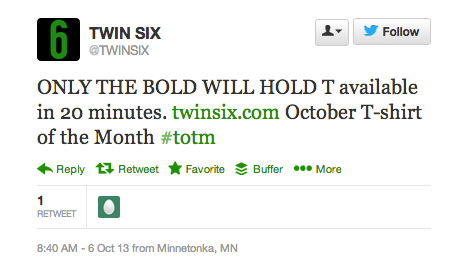Hashtags are common nowadays. They are prominent on many social networks. You see them on television commercials and programs. Late night talk show host Jimmy Fallon even has a segment devoted to popular hashtags.
But what is a hashtag? How does it work? What is its value for ecommerce?
Hashtag Definition
First introduced on Twitter in August 2007, a hashtag is a word or phrase prefixed with the “#” sign. There are no spaces between the hash sign and the word or term, and there can be no spaces between words if you are using more than one word in a single hashtag.
Here are some examples.
- #vintagejewelry
- #socialcommerce
- #ecommerce
- #customerservice
What Hashtags Do
Hashtags make it easy to find conversations taking place on social media around a given topic. They are designed to create content categories that people can follow. Users place hashtags in their social media posts — either in the body of the text or following the text — to label content based on categories. In other words, hashtags are keywords that relate to the topic being discussed.
Many social networks recognize hashtags and turn them into clickable links, which can then be viewed by others, to track the most current posts by anyone using the tag. Social networks that support hashtags include Twitter, Instagram, Facebook, Google+, Pinterest, Tumblr, Flickr, and Vine.

Example of Twitter hashtag for #Vintage #Jewelry.

Example of hashtag for #vintagejewelry on Facebook.
Hashtags Leverage the Interest Graph
Hashtags are useful because they focus not on the “social graph,” the network of personal connections, but the “interest graph,” a network built around topics of shared interest.
Just because I’m connected to a number of friends on Facebook doesn’t mean that we share the same interests. However, using hashtags I can find connections where common interest exists, and then develop a relationship with people built on that foundation.
How Hashtags Benefit Ecommerce Merchants
Merchants can use hashtags to monitor conversations about their brands and products, promote products, build brand awareness, and conduct marketing campaigns.
- Monitor conversations. Using the tools listed below, merchants can search for hashtags related to specific brands or products, or product lines and categories, and then follow conversations about those terms. This is a good way to gain intelligence about products people like or have interest in, which may help in merchandising or inventory purchase planning.
- Promote products. Not only can merchants monitor conversations, they can interact with people who are talking about products, which could lead to sales. For example, a search for #pandorajewelry on Facebook reveals a special offer being run by jewelry retailers where customers who buy the Pave Gift Set can save $40 off the purchase price. This is one of many such posts, some of which received numerous comments, likes, and shares. This presents a perfect opportunity for a merchant to interact with potential customers.

A product promotion tied to #pandorajewelry on Facebook.
- Build brand awareness. Merchants can use hashtags that relate to their brand names in order to generate awareness and associate the brand with the products they sell. Retailer Barneys used the hashtag #BNYFW during New York Fashion Week on Twitter and Instagram to encourage conversations about the brand at various events and shows.

Retailer Barneys used a branded hashtag during Fashion Week.
- Run marketing campaigns. Hashtags are often associated with marketing campaigns, such as seasonal sales, special offers, and contests. Athletic apparel company TwinSix uses the #totm hashtag to promote its T-shirt-of-the-month campaign.

Twin Six uses the hashtag #totm to promote T-shirts.
For a more extensive list of ways that merchants can use hashtags, read “Using Twitter Hashtags for Ecommerce Marketing,” my previous article.
How to Find Hashtags
Merchants can search for hashtags using a number of tools. Here are three examples.
- Tagboard. Users create “tagboards” to follow the hashtags they are interested in across multiple social networks, including Twitter, Instagram, Facebook, Vine, and Google+.
- Hastagify.me. This site reveals hashtags that are related to the one being searched, along with the top influencers who are using the term.
- Twitter advanced search. The advanced version of Twitter search includes a field for hashtags. Searches can also be filtered based on sentiment. An additional search parameter limits returns to people who are asking a question that includes the hashtag.
Conclusion
The use of hashtags has become a staple in today’s culture and they are not likely to go away anytime soon. Merchants can leverage their popularity to join in conversations, build brand awareness, and promote product sales within social media.



